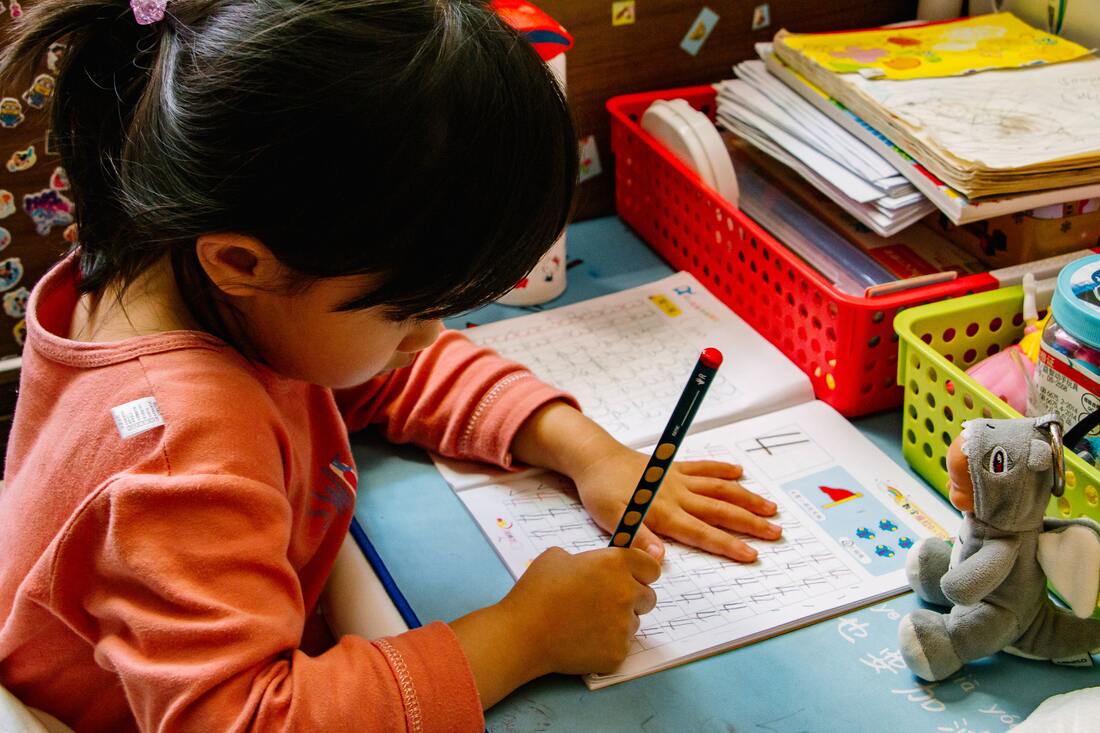|
Okay...well what we are really talking about is regulating the nervous system to get back to a ventral vagal state and out of our fight/flight response (sympathetic nervous system) or a shutdown state (parasympathetic nervous system) in a way where nobody knows we are trying to regulate our nervous system state.
Wheew. That is a mouthful and usually a bit more than our young people can digest in one sitting. So - covert calming is a little easier way to describe the activities and strategies we might use to get back to a state we feel in control of our emotions and thoughts and connected to ourselves that doesn’t draw attention to the fact we are trying to calm. BUT if that other stuff is totally your jam and you want to dive in deeper - that is all part of Dr. Stephen Porges’s Polyvagal Theory. I like to call Deb Dana the “translator” of the Polyvagal Theory from super deep and dense neuroscience to still heavily grounded in neuroscience but in a way that clinicians (as opposed to researchers) can understand and easily apply to client work. Her books like this one HERE is definitely my favorite. If you just want to dip your toe in check out this overview by Justin Sunseri HERE. He also has the Stuck Not Broken podcast which is absolutely fantastic. Okay, now back to covert calming. Calming skills and regulation skills are...complicated. At the end of the day I believe nearly 100% of the work we do with young people is to help them regulate their nervous system state. This can be done So. Many. Ways. Some theories like Cognitive Behavioral Play Therapy have regulation skills teaching as a core part of the theory. Other theories like Child Centered Play Therapy help the child regulate their nervous system in other ways, such as holding safe space and the relationship as the guiding factor. THEN there are those young people you work with that you could teach one zillion skills to and they refuse to use them. No thanks. Not interested. Deep breathing doesn’t work. OR there are the young people where you teach a zillion skills to and they find something completely and totally different to use to regulate. They might say something like “oh ya, those don’t work, I just do this AMAZING thing instead”. Usually with a straight face and a nonchalant voice. And then you burst out with excitement and your happy dance because young people are just so darn resilient! So, having said that not all kids need a tool box of skills you teach them to regulate outside of your office, but some do! For those kids one of the biggest barriers I have found to using skills are embarrassment and shame. For those kids I usually talk about “covert calming”. We get really curious and brainstorm what sorts of things they can do at their desk, in the halls, at dance practice, cub scouts (you get the picture) to regulate where nobody on the outside could tell they are doing it. Here are some of the ways I have found that work with young people: Deep breathing Deep breaths are my favorite way to teach regulating the nervous system. There are so many cool ways and games that you can use to teach deep breathing! AND the best thing about it is slowed heart rate actually changes your nervous system state because it signals to the body that the threat is gone. I always tell my clients that the cool news about deep breathing is everyone is doing it 24/7 so it definitely won’t be out of the norm if you, you know, continue to breathe. And because you have to you can yield it as a superpower. I will often engage in deep breaths as I talk about this topic and then at the end ask the client if they knew I was intentionally deep breathing. We can then practice in session and guess when we are being intentional vs. not. Going to the bathroom Well...not actually going to the bathroom, unless you need to and in that case - listen to your body! For some young people this may not be an option due to anxiety about asking to leave a situation (like class, a friends bedroom, a movie, etc.). BUT if they are able going to the bathroom and leaving the environment may make it easier to regulate. Sometimes being out of the environment will help their bodies begin to regulate easier. In the bathroom you can do things that you may have done anyway but just a little different. You can wash your hands with cold water in an attempt to calm. You can stop at the drinking fountain (if at school) to get a drink and some exercise/movement walking to and from the bathroom. When we are in a flight response (typically associated with anxiety) sometimes just walking can help discharge some of that energy. 5 Senses This one only requires minor movement and can be done nearly everywhere. With this one you (in your head) list out or engage in action for the following: 5 things you see 4 things you hear 3 things you touch (actually touching if possible) 2 things you smell (just noticing differences or smelling different things if possible) 1 thing you taste (can take a sip of something, put in gum, or just notice) Even if all are not able to be achieved even using some of our senses can ground us in the here and now! Toe tapping The Butterfly Hug* is something we often teach clients to help them soothe. If you are not familiar read more about it HERE! The downside to this is if a young person is tapping on their shoulders (like a self hug) their friends are sure to know about it! I usually suggest going down to the knees under the desk OR alternating tapping toes softly or scrunching toes in the shoes. I also like to add a safety statement like “I am safe” where one word is said with each tap! Visualizations Any visualizations are great for covert calming. It is only limited by your imagination! Some of my favorites are visualizing a favorite memory, a calm peaceful place, something they look forward to or containment. For containment I love to use a rocket ship metaphor where we are loading thoughts and feelings that don’t feel good for us in the moment into the rocket ship and blasting them off to outer space! What are your favorite ways to teach clients to “covertly calm”? Drop your favorites in the comments below! Looking for more resources for regulation? Check out my training on Keep Calm and Regulate On: Play Therapy and the Neuroscience of Emotional Regulation! *The Butterfly Hug was developed for use within EMDR (Eye Movement Desensitization and Reprocessing) by EMDR trained clinicians. I always like to give informed consent when I talk about the Butterfly Hug or Toe Tapping to clinicians who are not trained in EMDR to make sure they have some training in the mechanisms behind Bilateral Stimulation (BLS) and know the risks, which include (although very small) that a client could go into “reprocessing” with BLS and could become flooded or more anxious. Practicing in the office is essential.
2 Comments
Andrea B
3/9/2021 10:54:58 am
Great resources! Thank you! And all in one place. Another grounding tool I like to teach my child clients is the Rainbow- like the 54321 but some kids have a hard time remember which is which and get frustrated even when taught not to worry about the order. Everyone knows the colors of the rainbow, name 5 red things, 4 orange things, 3 yellow...
Reply
Ann Meehan
3/9/2021 03:00:58 pm
Thanks Andrea! I agree that some people really do get hung up on which sense goes with what number!
Reply
Leave a Reply. |
Hi, there!I'm Ann Meehan, an LPCC, Loading... Archives
July 2024
Categories
All
|
Privacy Policies | Terms of Use | Disclaimer
Contact
[email protected] | Copyright Meehan Mental Health Services 2022
Contact
[email protected] | Copyright Meehan Mental Health Services 2022





